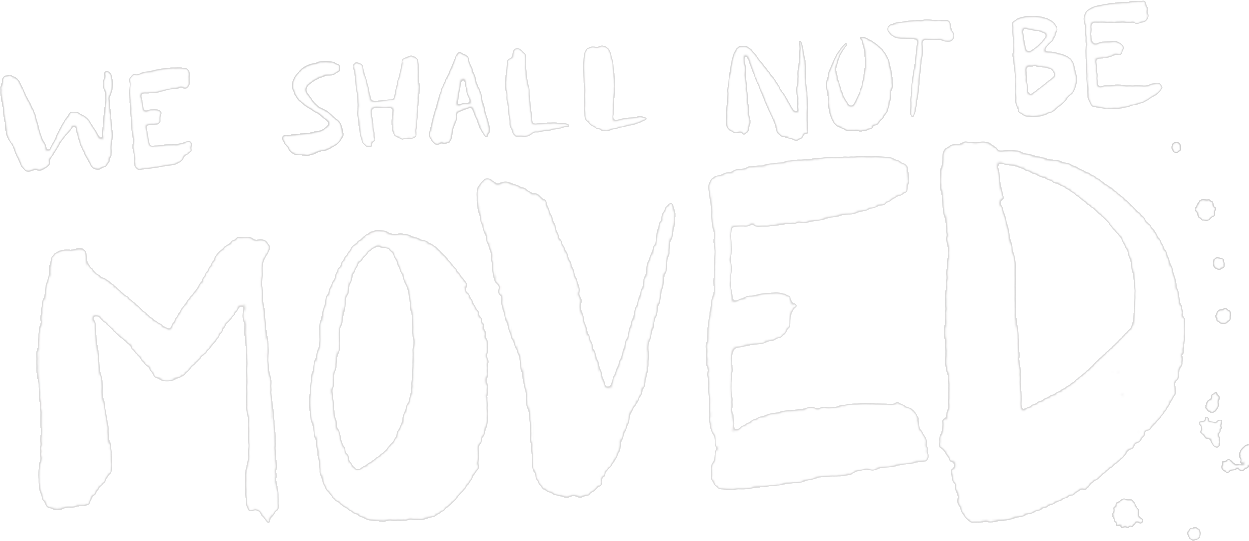ACT I
On the run after a series of tragic incidents, five North Philly teens ( John Henry, John Blue, John Little, John Mack, and Un/Sung) find refuge in an abandoned, condemned house in West Philadelphia. The home sits at the exact location of the headquarters of the MOVE organization before it was infamously burned to the ground in a 1985 police confrontation that left 11 people dead and no government officials indicted or meaningfully reprimanded. The teens are assuaged and even inspired by the ghosts who inhabit this home (who we refer to as the OGs), and begin to see their squatting in the home as a matter of destiny and resistance rather than urgent fear or precarious circumstance. Into this mix enters Glenda, a north Philly native turned West Philly cop who patrols this quiet stretch of Osage Avenue on her regular beat. Glenda observes that the young people have taken over the home and are “hanging out” there when they are supposed to be in school. She moves determinedly to sweep the kids out of the home, threatening them with arrest and ridiculing their intentions. But in a chaotic accident, she moves too far and mistakenly discharges her firearm, injuring one of the teens. In her temporary shock, Glenda is overrun by the other young people, who turn the tables on the situation by pointing Glenda’s own gun at her and subsequently handcuffing her to a chair in the center of the house.
ACT II
John Henry lays bleeding in a pool of sorrow, confronted at a desperately young age with his own mortality. All parties are now frightened, disoriented, and vulnerable, and the only sense of empowerment in this bleak moment comes from the OGs who infuse the home with a spirituality that is palpably felt by the young people in particular. Glenda challenges the validity of this ‘movement of holy ghosts,’ but cannot deny that whatever the origins, the young people, led by the sole female-identified teen, Un/Sung, are clearly operating from a place of conviction.
Still suspicious and driven by her vulnerable position, Glenda probes this conviction, intimating that the teens are not motivated by principle alone. Finally the teens succumb to the reality of the moment: their brother has been wounded and is in need of help, and the most expedient way to help him is to leave the house. They decide to reveal to Glenda the circumstances that drove them to squat in the house on Osage. They think Glenda has something to hide (firing at an unarmed teen) and so do they, and if they come clean with their story, the combination of transparency and quid pro quo may grant them safe, unreported passage out of the house. However, in revealing the origins of their plight, they also realize that a young man who John Blue has killed is Glenda’s own brother, Manny.
ACT III
The family confers feverishly about the increasingly limited options for their next move, concluding that the best “survival” tactic is to “disappear” Glenda altogether. Un/Sung commits to completing the task, instructing her brothers to leave quickly for a predetermined location to avoid any further witnesses while she does “something awful.”
A confrontation between the young girl and Glenda ensues, concluding with silence, complete darkness in the theater, and the assumption of injury.
When the lights come all the way up, the family has vanished, and the house on Osage Avenue has burned to the ground. Glenda tells an interviewer the story of her waning moments with the family from a plane above the action, but we watch a different story unfolding at eye level. All the players are setting the house on “fire,” not with kerosene or grand flames, but with small, glass-framed candles. The image is not of arson, but of ritual. The Family is turning the home into an altar, perhaps an instrument of forgiving, of letting go, of release, and of renewal. As the lights come down for the final time, the last remaining image on stage is of the skeleton of a house, lit up like a shrine, while the OGs move around it in holy rites.
